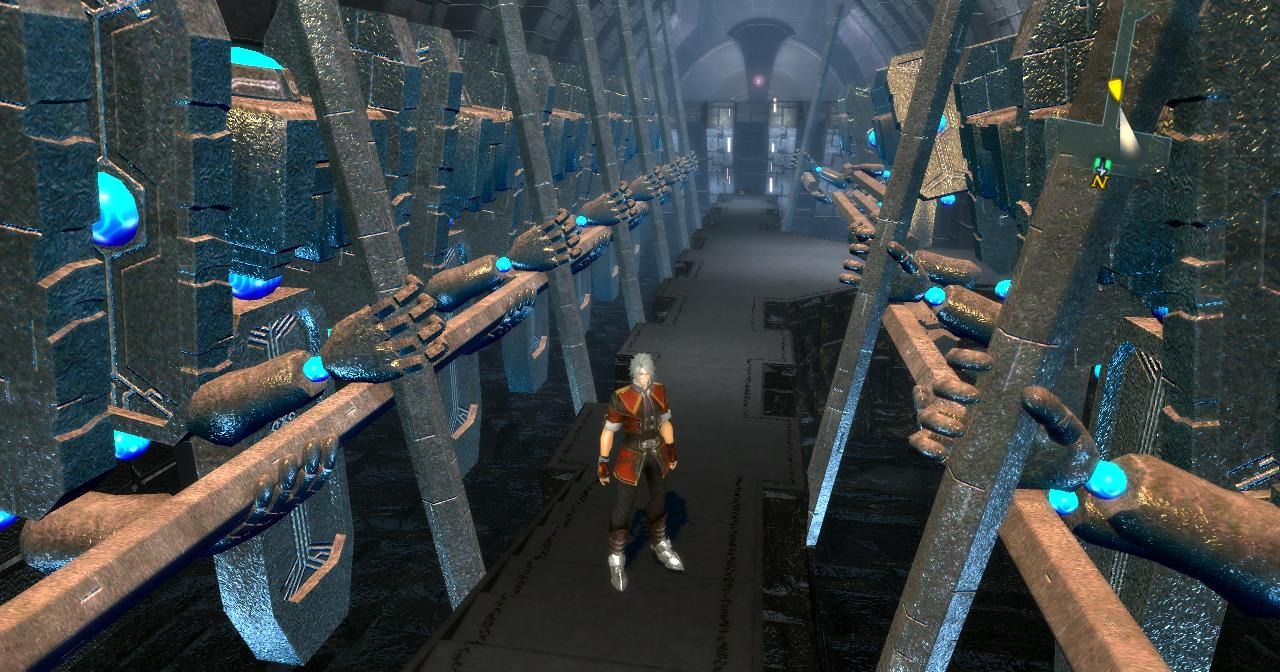Microsoft consoles are in dire need of more role-playing games. While there have been some standout titles in recent years (such as Oblivion, Jade Empire, and Knights of the Old Republic), the Xbox has been lacking in traditional Japanese-developed RPGs, especially when compared to the impressive selection on the PS2. Thankfully, we were not the only ones who noticed the limited RPG options on Microsoft’s console, as Ubisoft stepped in with Enchanted Arms, the first JRPG on the Xbox 360 and the first of its kind for the next generation.

Enchanted Arms, while lacking originality and adhering to common Japanese role-playing game tropes, is a satisfying experience and serves as a dependable introduction to the next generation of gaming, satisfying players’ desire for turn-based gameplay.
Enchanted Arms is a classic Japanese RPG in every aspect. In simpler terms, do not anticipate anything groundbreaking or a compelling storyline that will leave you wanting more. Similar to other modern RPGs (such as Dragon Quest and Grandia 3), the plot takes a backseat and serves as a mere justification for the characters’ travels between cities.
In Enchanted Arms, the player assumes the role of Atsuma, a student at Enchant University, a prestigious school for those with special abilities. Accompanied by his friends, Atsuma sets out on a quest to confront an ancient evil and uncover the significance of society, humanity, and selflessness. Does this plot sound familiar? It should. “Enchanted Hands” follows a predictable storyline and features stereotypical characters, such as Makoto, Atsuma’s passionate transvestite friend, who has sparked controversy among players.

Congratulations to the team for broadening their perspectives and adding a character with traits similar to Makoto’s. However, it is disheartening to see that this character is quite stereotypical, with the exception of their voice and mannerisms. Other common characters include a strong female figure, tough on the surface but gentle at heart; a bulky and simple-minded individual wielding a massive sword and struggling with making tough decisions; and, of course, the protagonist of the game who finds themselves in perilous situations and holds the only solution to saving humanity. It’s quite predictable.
Enchanted Arms may not have the strongest narrative, but it more than compensates with its engaging character interactions. While there may be a lack of female characters in the game, the banter between the cast is truly priceless. There are plenty of clever quips and mature themes that would appeal to a more mature player. It’s easy to revisit a particular dialogue scene between a quirky hotel employee and another character, as well as other memorable moments involving specific characters.
If you have ever played a JRPG, you will likely be familiar with the game’s structure. The characters journey through various cities, although only four of them are underwhelming, and in each city, one of the characters has a personal history and unresolved conflict that must be resolved. Between cities, there are dungeons where random events occur frequently, to the point where you cannot take more than a few steps without the game’s action theme playing (which oddly resembles the theme from Metal Gear Solid 3). However, this minor inconvenience is balanced out by the option to switch to automatic mode for all actions and the ability to speed up animations, both of which are excellent additions to the genre.
Nevertheless, utilizing an automated system and utilizing it improperly are two distinct issues. In the end, a task, even a mundane one against relatively feeble adversaries, may require more than five minutes to complete. With the frequency of these tasks, it becomes exceedingly challenging to resist the temptation of simply pressing “Y” and allowing the computer to take control.

Alternatively, activating the automatic system while the boss is in action is a surefire way to fail. Enchanted bosses are notoriously challenging, often requiring multiple attempts to defeat. Even then, it’s common to have only one character left with a low number of life points. I’ve encountered numerous situations where my victory was only possible because I made the final move before the boss. This creates a high-stakes and exhausting gameplay experience, particularly in the early stages of the game where stats are typically low and powerful golems are scarce.

